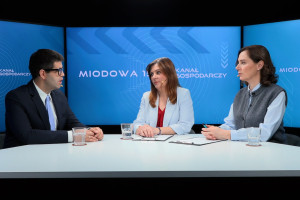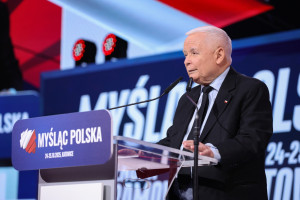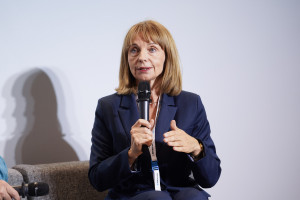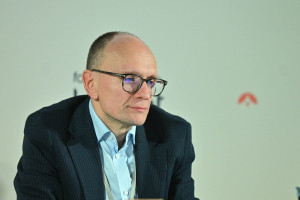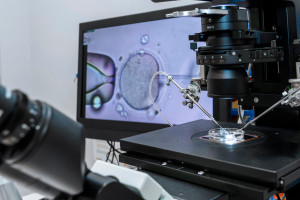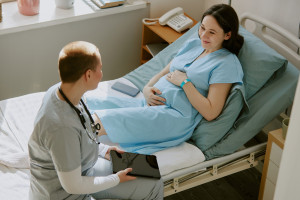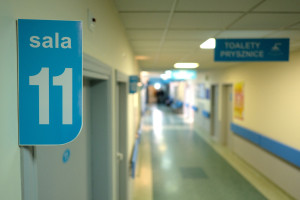A success that outgrew the system. Poland is lagging behind in vitro funding.

- The government's in vitro reimbursement program provides couples with up to six assisted reproductive procedures, psychological support and infertility treatment.
- Although its annual budget is PLN 500 million, the needs are much greater. The funds are sufficient for approximately 39,000 procedures, while demand is estimated at 60,000–70,000 annually.
- By the end of September 2025, the program had resulted in over 6,000 babies being born, 19,000 clinical pregnancies, and 39,000 couples being enrolled.
- The financing of so-called additional procedures, which are not always proven to be effective, is controversial.
- The Ministry of Health announces that public funds will be allocated only to services of documented clinical value, and the catalogue of permitted procedures is intended to protect patients from abuse
The government's in vitro program, funded since June 1, 2024 , allows couples to receive comprehensive infertility treatment, psychological support, and up to six assisted reproductive procedures . It was created based on a law passed at the end of 2023 that stipulates that the state will allocate at least PLN 500 million annually for in vitro reimbursement. It will run until December 31, 2028, and is expected to cost PLN 2.5 billion in total. Cancer patients can also benefit from this program to protect their fertility.
As a reminder, the previous IVF program ran from 2013 to 2016. The number of children born through it is estimated at 22,191 – these are estimates from 2020. Over PLN 237 million was spent on the program. This is less than half of the amount we spend on IVF annually under the current program.
"Even though the program was discontinued in 2016, we've seen an increase in the number of assisted reproductive procedures performed. Today, although not everything may work perfectly, Poland has one of the best in vitro reimbursement systems. The Polish system is similar in many respects to the one considered the most comprehensive and efficient. I'm referring to in vitro reimbursement in Israel," said Prof. Rafał Kurzawa , president of the Polish Society of Reproductive Medicine and Embryology (PTMRiE), during the Symposium of the Polish Society of Reproductive Medicine and Embryology.
It is worth recalling that the program also covers reimbursement of stimulation drugs in accordance with international recommendations in this area.
The in vitro support program is intended for couples who are married or cohabiting (a declaration is sufficient):
- who have been diagnosed with infertility or have been unsuccessfully treated for it - within 12 months before applying to the program;
- which have cryopreserved and stored embryos created as part of previously performed procedures.
Age criteria apply:
- women up to 42 years of age – if they use their own eggs or sperm donation
- women up to 45 years of age – if they use oocyte or embryo donation; men up to 55 years of age.
The first detailed data on the program appeared at the end of 2024.
"It was already clear then that the program would be effective and that the vast majority of the funds allocated for its implementation would be utilized. A preliminary analysis showed that PLN 500 million would be sufficient to finance approximately 39,000 procedures. However, the dynamics of demand indicated that we should perform 60,000-70,000 procedures annually. It seems, therefore, that there are budget constraints in this area, but we also know the realities in which we operate," admitted Professor Kurzawa.
However, as he emphasized, it is an investment with a huge rate of return.
- 1 euro invested in infertility treatment means a minimum of 30, and on average 80 euros of return - added the expert.
Due to negative demographic trends, it is estimated that by the end of 2028 , as many as one in 20 newborns born in Poland will be the result of in vitro fertilization .
As of the end of September 2025, the program has resulted in over 6,000 births and over 19,000 clinical pregnancies. Thirty-nine thousand couples have qualified for the program, and 1,247 individuals have benefited from fertility preservation procedures.
Today, the key needs of the community include Poland joining the European register of medically assisted reproductive procedures EuMAR, extending in vitro reimbursement to women who are not in a relationship, and including insemination in the reimbursement system.
"Funding insemination under the program would improve the rational use of resources. Currently, many patients skip this stage of treatment," noted Professor Kurzawa.
There will be more money for in vitroIf the doctor determines that an additional procedure included in the program will increase the chances of success, they may offer it to the patient free of charge. At the same time, the doctor should also explain to the patient why it is appropriate in their case.
"The expectation is clear: from the moment they enroll in the program until the end of treatment, patients do not pay for procedures performed within it. One of the changes introduced during the program was the permission to freeze excess oocytes, either as part of the program or commercially. If a couple decides to do so under the program, they use the oocytes in the next cycle. If they do so privately, the decision is theirs, but they continue with the program without private benefits. If they achieve a pregnancy and have completed their reproductive plans, they can donate them," explained Dagmara Korbasińska-Chwedczuk , director of the Department of Health Equality at the Ministry of Health.
Funding for preimplantation genetic diagnosis remains outside the program. It should only be performed for clearly defined indications and after prior genetic counseling. The main indications include: a woman over 35 years of age, a family history of genetic disorders or confirmed carrier status, recurrent miscarriages, unsuccessful in vitro procedures, and severe male factor infertility.
- We approach this in such a way that it is not directly related to infertility treatment - explained Dagmara Korbasińska-Chwedczuk.
She added that in 2025, after increasing funding, PLN 600 million will be allocated to the program.
"We've applied for PLN 600 million for an in vitro program next year. We're waiting for a decision. Much will depend on how the budget is processed," admitted Dagmara Korbasińska-Chwedczuk.
Expanding the program's age criteria is also not expected anytime soon. The ministry believes this would limit the opportunities for those whose IVF treatment results in a pregnancy.
Controversy surrounding additional proceduresMuch controversy surrounds the financing of IVF (in vitro fertilization) procedures. These are various supportive procedures that, as many clinics emphasize, can increase the effectiveness of in vitro fertilization. The problem is that the effectiveness of many of them has not been confirmed by research.
"From the perspective of the public payer, this issue is highly controversial, as some centers aggressively recommend additional procedures as a panacea for all failures. As part of the program, we have a catalog of additional procedures. It includes procedures that may have a scientific justification. This may limit the portfolio of services, but it protects the patient," emphasized Professor Marek Spaczyński.
- No procedures, except for specific indications of preimplantation diagnosis, should be financed by the patient - added Prof. Kurzawa.
Copyrighted material - reprint rules are specified in the regulations .
rynekzdrowia

